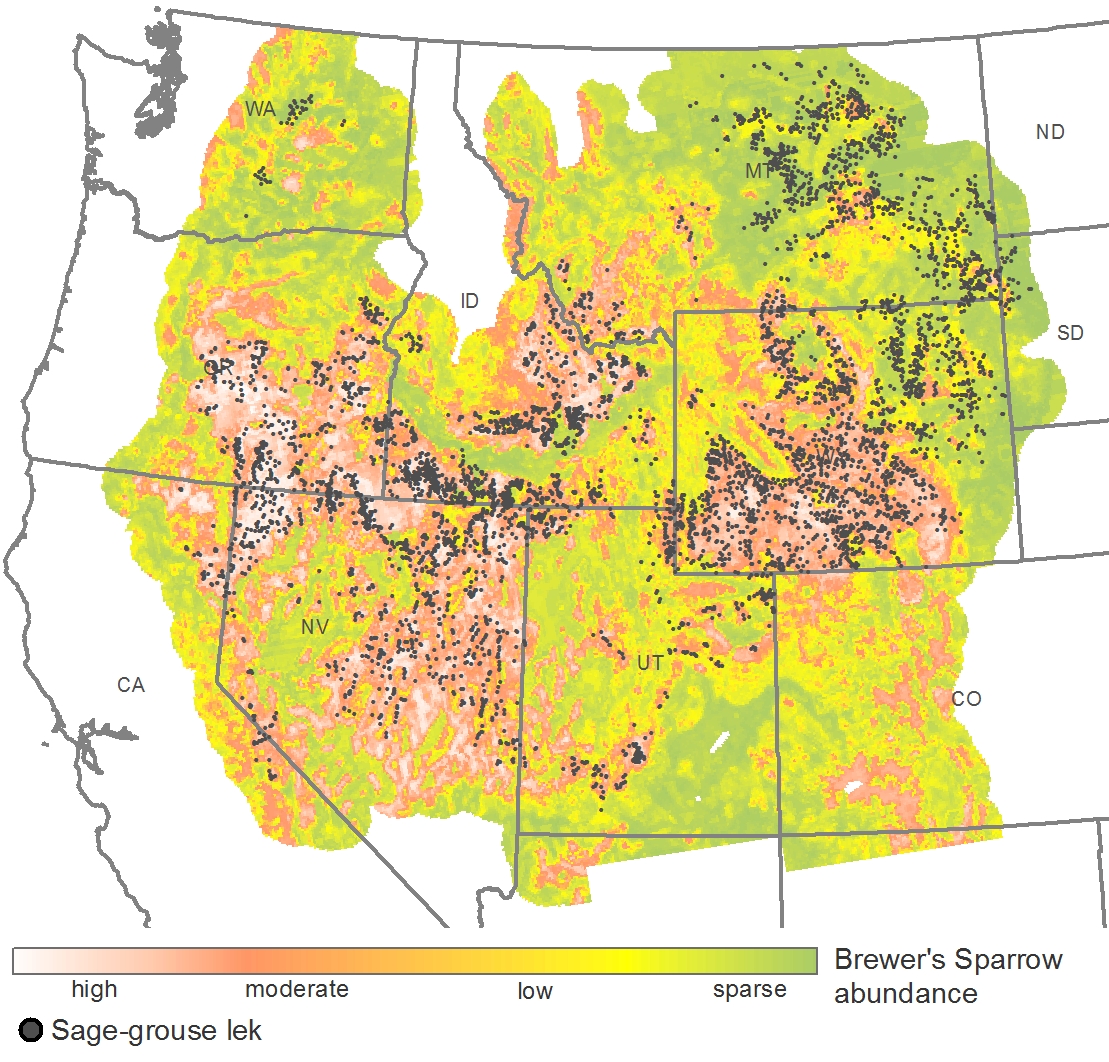FWS researchers investigated whether the recent, unprecedented scale of sage-grouse (Centrocercus urophasianus) conservation in the American West has had beneficial effects on other sagebrush-obligate species. North American Breeding Bird Survey (BBS) count data and machine learning were used to assess predictors influencing spatial distribution and abundance of three sagebrush-obligate songbirds: Brewer’s sparrow (Spizella breweri), sagebrush sparrow (Artemisiospiza nevadensis), and sage thrasher (Oreoscoptes montanus). Researchers quantified co-occurrence of songbird abundance with sage-grouse lek (i.e., breeding and nesting site) distributions using point pattern analyses and evaluated the concurrence of songbird abundance within sage-grouse habitat restoration and landscape protection.
Sagebrush land cover predictors were positively associated with the abundance of each songbird species in all models. Individual songbird models identified an apparent 40% threshold in sagebrush land cover over which songbird abundances nearly doubled. Songbird abundances were positively associated with sage-grouse distributions (P 0.01); rangewide landscapes supporting >50% of males on leks also harbored 13–19% higher densities of songbirds compared to rangewide mean densities. Additionally, 85% of the conifer removal conducted through the Sage-Grouse Initiative coincided with high to moderate Brewer’s sparrow abundance. The core area of Wyoming’s landscapes protected for sage-grouse encompasses half of the high to moderate abundance sagebrush sparrow and sage thrasher populations. In the Great Basin, half of the high to moderate abundance sagebrush sparrow and sage thrasher populations coincides with sage-grouse FIAT (Fire and Invasive Assessment Tool) priorities where conservation actions are being focused in an attempt to reduce the threat of wildfire and invasive plants. This work illustrates that spatially targeted actions being implemented ostensibly for sage-grouse largely overlap high abundance centers for three sagebrush obligate passerines and are likely providing significant conservation benefits for less well-known sagebrush songbirds.

Shown is the predicted Brewer’s sparrow abundance across the western United States, displayed by class: high, moderate, low, and sparse. The abundance model is derived from Breeding Bird Survey data utilizing satellite-based land cover indices. Brewer’s sparrow distributions were positively correlated to sage-grouse populations represented by leks (i.e., sage-grouse breeding and nesting sites).

